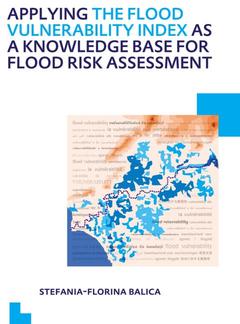Description
Applying the Flood Vulnerability Index as a Knowledge Base for Flood Risk Assessment
UNESCO-IHE PhD Thesis
Author: Balica Stefania-Florina
Language: English
Subjects for Applying the Flood Vulnerability Index as a Knowledge...:
83.43 €
In Print (Delivery period: 14 days).
Add to cartSupport: Print on demand
Description
/li>Contents
/li>Readership
/li>Biography
/li>
Floods are one of the most common and widely distributed natural risks to life and property worldwide. There is a need to identify the risk of flooding in flood prone areas to support decisions for flood management from high level planning proposals to detailed design.
An important part of modern flood risk management is to assess vulnerability to floods. This assessment can be done only by using a parametric approach. Worldwide there is a need to enhance our understanding of vulnerability and to also develop methodologies and tools to assess vulnerability. One of the most important goals of assessing flood vulnerability is to create a readily understandable link between the theoretical concepts of flood vulnerability and the day-to-day decision-making process and to encapsulate this link in an easily accessible tool.
The present book portrays a holistic parametric approach to be used in flood vulnerability assessment and this way to facilitate the consideration of system impacts in water resources decision-making. The approach was verified in practical applications on different spatial scales and comparison with deterministic approaches. The use of flood vulnerability approach can produce helpful understanding into vulnerability and capacities for using it in planning and implementing projects.
1. Introduction
2. Synthesising vulnerability and risk
3. Development of flood vulnerability indices at varying spatial scales, its implementation and dissemination
4. Reducing the complexity of Flood Vulnerability Index
5. Parametric and physically based modeling techniques for flood risk and vulnerability assessment: a comparison
6. A Flood Vulnerability Index for Coastal Cities and its Use in Assessing Climate Change Impacts
7. General conclusions, evaluation and outlook




